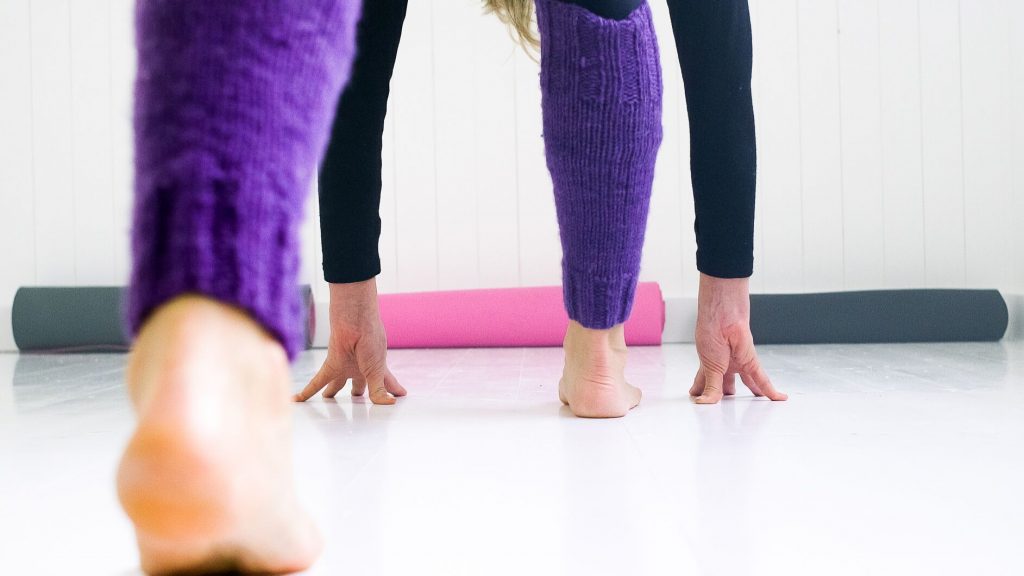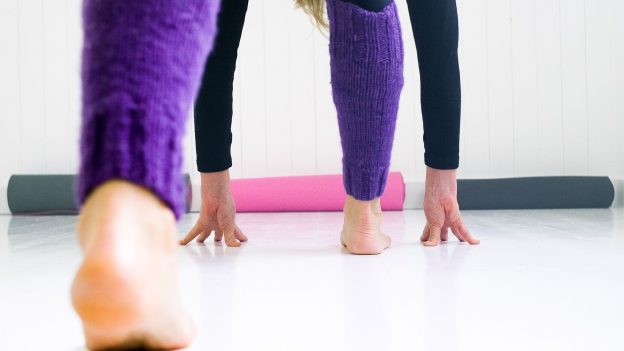Did you know it’s really good idea to try out different yoga styles? It will help you gain fresh insights and retain a beginner’s mind. Read on to find out how to do it!

Stepping out of your comfort zone
Years ago, I remember being asked what style of yoga I practiced. I have to admit, I was a bit confused by the question and a bit stumped as to what my answer should be. All I knew was that I rocked up to a weekly yoga class and generally left feeling a whole lot better than when I had arrived.
Somehow the ‘yoga’ I did created more space in my mind and body. I always slept well afterwards and the next morning I felt two inches taller. Fast forward twenty years and I can tell you that I mainly practice vinyasa but love my restorative practice too.
I enjoy paying close attention to the effects of gravity on my spine in Scaravelli-inspired classes. I now know the difference between Iyengar and Ashtanga Vinyasa, admire the spiritual practices in Jivamukti; and am intrigued by the transformation Forrest yoga offers. I don’t practice every style of yoga, but I do like to occasionally mix it up by trying different styles. What’s more, I don’t just stick to yoga, it turns out that mindful movement is my thing and Qigong, either on its own or fused with yoga can lift my spirits when weary and create a sense of balance.
Trying Different Styles
For me, this is more than stepping out of my comfort zone and facing challenge. For me, trying different styles offers me the opportunity to keep connecting with my ‘beginner’s mind’. There can be something deeply soothing about the repetition of a regular yoga practice in a style that we have become accustomed to, but sometimes that very custom and habit means we approach our yoga with a more judgemental attitude or without exploring every possibility. Trying different styles keeps us attuned to being present, and stops us to falling into habits and patterns we may have picked up in our yoga practice or in our life. Approaching yoga with a beginner’s mind means that I connect with a multitude of possibilities rather than sticking to my own perceived ‘correct’ way of approaching poses and it keeps me rooted in staying open to learning.
This is not the only reason I continue to mix it up. As well as reconnecting to my beginner’s mind, I also find that working with different styles helps me to address what I need from my yoga practice. It is easy to fall into habits and roll out the mat and move into a flow because that is what I’m used to doing. Sometimes though, I long to explore and experiment. Sometimes I don’t need to flow but rather spend twenty minutes in a restorative pose or maybe an hour exploring the connections between my feet and my yoga poses in a Scaravelli inspired class or maybe even I need to build the heat in my core and to stretch and challenge myself. Flowing through I can only know this by really asking myself what it is that will serve me the best and then by responding by finding the yoga practice that will connect me to what it is I need.
Ultimately, by mixing it up, I find that I go back to the very reasons I first fell in love with yoga, it helps me to find a new perspective, to find a greater awareness and a space in which I am kinder to myself and to others and to waking up feeling two inches taller.
Hatha
Hatha Yoga is a very broad term referring to the physical practice of yoga, however it is increasingly being used to describe classes that are more static.
Vinyasa
Vinyasa flow offers dynamic yoga practiced in a flowing sequence which offers the opportunity to align breath and movement bringing a stillness to mind and body.
Ashtanga
Ashtanga is a style of yoga codified by K. Pattabhi Jois in the 20th Century. Ashtanga is a highly structured, dynamic form of yoga which is performed in a set series of progressively more advanced sequences.
Scaravelli Inspired
Scaravelli inspired yoga is a gentle, experimental and liberating form of Hatha yoga which encourages practitioners to strive less, feel more and uses gravity to release tension and create length in the spine.
Forrest
Forrest yoga, developed by Ana Forrest is known for its long holds, emphasis on core work and intricate sequences designed to offer transformative experiences.
Jivamukti
Jivamukti is a yoga method created by David Life and Sharon Gannon. Jivamukti is a dynamic style of yoga bringing together physical yoga with a strong ethical, spiritual and philosophical core.
Yin and Restorative Yoga
Yin yoga is a quiet, stilling, floor-based practice in which you hold poses for a length of time helping you drop deeper and play with your edge.
Restorative yoga allows your body to experience deep relaxation through a series of long, passive stretches that are fully supported by props. The experience of deeply supported passive stretches allows your body to begin releasing habitual, long-held tension.

This post was written by Rakhee Jasani, our wordsmith at MFML!





Brilliant article. Begin again every day – I love different focus in the same pose. Some days hip other day neck – different teachers always teaching the same pose differently so it’s not the same pose – it’s a new experience always. This is why even as a teacher it’s so valuable to attend classes and workshops to get different perspectives and for me. I often go to class to serve myself and not to learn something new to them go away and immediately teach.
I too love how each pose can be seen and experienced afresh through different perspectives and give us different insights as practitioners and as teachers. I think that the best teachers are the best students and vice versa! Infinite variety and lots to learn always. Great, isn’t it?